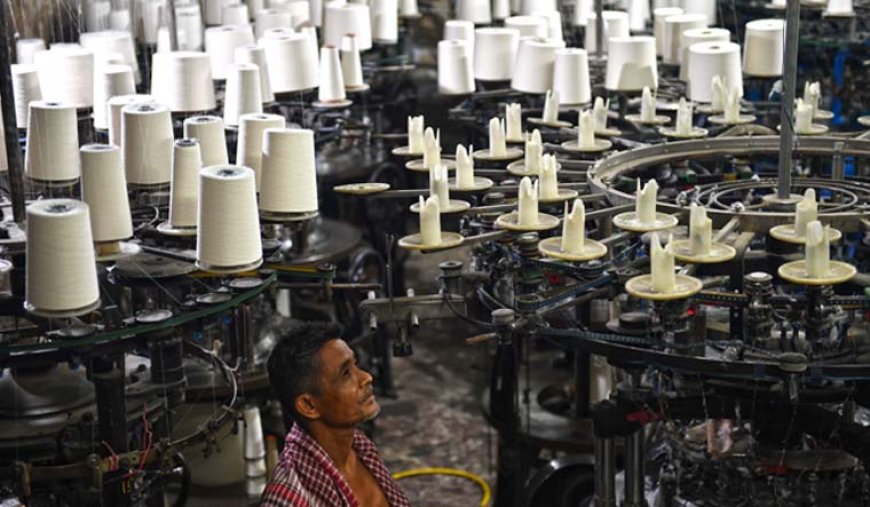India’s Silent Sufferers: How Trump’s 25% Tariff Barrage Threatens MSMEs in Handicrafts, Leather, and Gems Sectors
Trump’s new 25% tariffs on Indian imports could devastate small businesses. Explore the real impact on India’s MSMEs across textiles, leather, and gems & jewellery, and why this underreported issue demands urgent attention.

Introduction: The Unseen Storm Brewing Over India’s MSMEs
While global headlines focus on diplomatic sparring and election drama, a quiet economic storm is threatening the very backbone of India's export ecosystem—its Micro, Small, and Medium Enterprises (MSMEs). With former U.S. President Donald Trump reasserting protectionist trade policies in his current tenure, including a sweeping 25% tariff on several categories of Indian exports, the sectors most at risk aren’t tech giants or automotive companies—but the traditional, labor-intensive small businesses.
From the vibrant looms of Varanasi to the bustling jewellery workshops of Surat and the leather tanneries of Kanpur, thousands of small exporters are bracing for a blow that may cripple livelihoods and shutter generational businesses. And yet, the coverage of this issue remains shockingly thin. This article delves into the sectors most at risk, the real-time repercussions MSMEs face, and why urgent policy action is needed.
Trump’s Tariff Barrage: What Exactly Has Changed?
In a controversial move, the Trump administration reinstated steep 25% tariffs on a swath of imported goods, citing the need to "bring American jobs back" and penalize countries deemed to be benefiting disproportionately from U.S. trade. India, once granted preferential trade treatment under the Generalized System of Preferences (GSP), finds itself back on Trump’s trade radar.
While official details are still emerging, initial documentation indicates that textile handicrafts, leather goods, semi-precious stones, and custom jewellery will face direct hits. These sectors are dominated by MSMEs, many of which already operate on razor-thin margins and depend on U.S. buyers for over 30–40% of their export volume.
Textile Handicrafts: A Cultural Heritage Under Siege
India’s textile sector is not just an industry—it’s a cultural lifeline. Towns like Bhuj, Jaipur, and Varanasi export exquisite handloom sarees, block-printed fabrics, and home décor items that form a key part of U.S. boutique inventories and design chains.
According to EPCH (Export Promotion Council for Handicrafts), over $1.7 billion worth of textile-based handicrafts were exported to the U.S. in 2024 alone. The new tariffs could push U.S. buyers to source from Southeast Asia or Latin America, where duties remain lower. Small exporters lack the scale or bargaining power to absorb a 25% hike or negotiate new terms.
“We already face competition from Bangladesh and Vietnam. With this tariff, our American orders have dropped by 40%,” says Saurabh Mishra, a textile exporter from Gujarat.
Leather Goods: Kanpur and Chennai Feel the Heat
India is the second-largest exporter of leather garments and accessories, most of which are produced by MSMEs in Uttar Pradesh, West Bengal, and Tamil Nadu. Leather bags, belts, shoes, and jackets were popular low-cost alternatives to European luxury brands in the U.S. retail market.
But the 25% tariff now erodes that pricing advantage.
“A ₹2,000 bag we export to the U.S. now ends up costing American consumers over ₹2,800. The buyers have started cancelling orders,” laments a leather artisan in Kanpur.
As per CLE (Council for Leather Exports), the sector employs over 4 million people, and more than 70% of these are small-scale artisans and women-led enterprises. Their survival is now uncertain.
Gems & Jewellery: Small Traders May Vanish
India exports over $40 billion in gems and jewellery annually, with the U.S. being the top destination. While larger diamond exporters may have buffers, smaller players dealing in semi-precious stones, silver jewellery, and handcrafted pieces are the worst hit.
“We make customized silver rings and anklets that sell for $20–30 in the U.S. With this tariff, we become unviable,” says Shyam Kumar, a jeweller from Jaipur’s Johri Bazaar.
Many of these MSMEs lack export insurance or access to advanced compliance services, making them vulnerable to payment defaults or legal hurdles under new U.S. trade scrutiny.
MSMEs Are Already in Crisis—This Could Be the Final Blow
India’s 63 million MSMEs contribute nearly 30% to GDP, employ over 110 million people, and form 45% of total exports. But even before Trump’s tariff wave, they were already grappling with:
-
Rising raw material costs
-
GST compliance burdens
-
Delayed payments and lack of working capital
-
Post-COVID recovery challenges
The Ministry of MSME had launched credit schemes and export promotion councils, but these measures may now fall short of protecting exporters from international trade shocks.
“We need a dedicated MSME export relief fund, tariff offset incentives, and swift renegotiation of trade terms,” argues Anil Bhardwaj, Secretary General of FISME (Federation of Indian Micro and Small & Medium Enterprises).
What the Government Must Do Immediately
-
Bilateral Trade Talks with the U.S.
Restart diplomatic dialogue to carve out exemptions for MSME-dominated sectors or revive some GSP benefits. -
Export Credit Insurance Expansion
Broaden the coverage and accessibility of ECGC (Export Credit Guarantee Corporation) for micro-exporters. -
Tariff Offset Subsidies
Temporarily offer subsidies to MSMEs affected by punitive tariffs to help them retain foreign clients. -
Domestic Market Support
Boost domestic consumption of handicrafts and local goods via tax rebates, digital platforms, and state incentives. -
Digital Trade Platforms
Invest in building government-backed e-commerce export gateways to link MSMEs directly with foreign buyers, bypassing exploitative intermediaries.
Conclusion: Will India Let Its Artisans Fade Away?
This isn’t just about trade or tariffs. It’s about identity, culture, and survival. MSMEs in India are not faceless corporate entities—they are weavers, cobblers, stone cutters, and artisans whose skills span generations.
As Trump’s trade walls rise again, India must not sit idle. Ignoring the ripple effect of these new tariffs on small businesses could lead to job losses in the millions, an erosion of export diversity, and the quiet death of India’s most soulful industries.
If the government acts fast, supports smartly, and negotiates boldly, there is still time to turn the tide.


















































